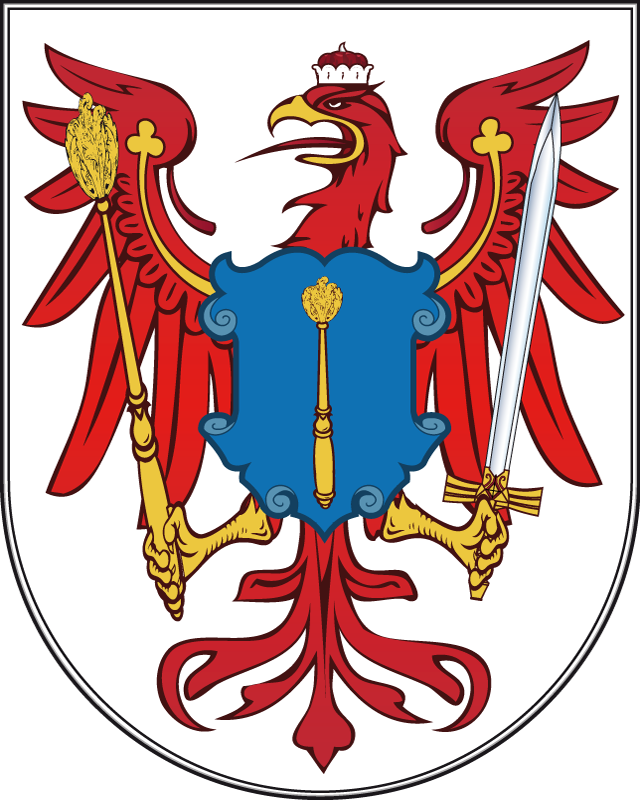|
Friedrich Sarre
Friedrich Paul Theodor Sarre (22 June 1865, in Berlin – 31 May 1945, in Neubabelsberg) was a German Orientalist, archaeologist and art historian who amassed a collection of Islamic art. In 1895-96, inspired by Carl Humann, he conducted archaeological research in Phyrgia, Lycaonia, and Pisidia, investigating architectural monuments and collecting epigraphic material. During two archaeological field seasons from 1911 to 1913 he excavated at Samarra, the 9th-century capital of the Abbasid dynasty, with Ernst Herzfeld. The two men published their findings in "''Archäologische Reise im Euphrat-und Tigris Gebeit''" ("Archaeological journey in the Euphrates and Tigris region").Dictionary of Art Historians Sarre, Friedrich [...More Info...] [...Related Items...] OR: [Wikipedia] [Google] [Baidu] |
Berlin
Berlin ( , ) is the capital and largest city of Germany by both area and population. Its 3.7 million inhabitants make it the European Union's most populous city, according to population within city limits. One of Germany's sixteen constituent states, Berlin is surrounded by the State of Brandenburg and contiguous with Potsdam, Brandenburg's capital. Berlin's urban area, which has a population of around 4.5 million, is the second most populous urban area in Germany after the Ruhr. The Berlin-Brandenburg capital region has around 6.2 million inhabitants and is Germany's third-largest metropolitan region after the Rhine-Ruhr and Rhine-Main regions. Berlin straddles the banks of the Spree, which flows into the Havel (a tributary of the Elbe) in the western borough of Spandau. Among the city's main topographical features are the many lakes in the western and southeastern boroughs formed by the Spree, Havel and Dahme, the largest of which is Lake Müggelsee. Due to its l ... [...More Info...] [...Related Items...] OR: [Wikipedia] [Google] [Baidu] |
Persia
Iran, officially the Islamic Republic of Iran, and also called Persia, is a country located in Western Asia. It is bordered by Iraq and Turkey to the west, by Azerbaijan and Armenia to the northwest, by the Caspian Sea and Turkmenistan to the north, by Afghanistan and Pakistan to the east, and by the Gulf of Oman and the Persian Gulf to the south. It covers an area of , making it the 17th-largest country. Iran has a population of 86 million, making it the 17th-most populous country in the world, and the second-largest in the Middle East. Its largest cities, in descending order, are the capital Tehran, Mashhad, Isfahan, Karaj, Shiraz, and Tabriz. The country is home to one of the world's oldest civilizations, beginning with the formation of the Elamite kingdoms in the fourth millennium BC. It was first unified by the Medes, an ancient Iranian people, in the seventh century BC, and reached its territorial height in the sixth century BC, when Cyrus the Great fou ... [...More Info...] [...Related Items...] OR: [Wikipedia] [Google] [Baidu] |
1945 Deaths
1945 marked the end of World War II and the fall of Nazi Germany and the Empire of Japan. It is also the only year in which Nuclear weapon, nuclear weapons Atomic bombings of Hiroshima and Nagasaki, have been used in combat. Events Below, the events of World War II have the "WWII" prefix. January * January 1 – WWII: ** Nazi Germany, Germany begins Operation Bodenplatte, an attempt by the ''Luftwaffe'' to cripple Allies of World War II, Allied air forces in the Low Countries. ** Chenogne massacre: German prisoners are allegedly killed by American forces near the village of Chenogne, Belgium. * January 6 – WWII: A German offensive recaptures Esztergom, Kingdom of Hungary (1920–1946), Hungary from the Russians. * January 12 – WWII: The Soviet Union begins the Vistula–Oder Offensive in Eastern Europe, against the German Army (Wehrmacht), German Army. * January 13 – WWII: The Soviet Union begins the East Prussian Offensive, to eliminate German forces in East Pruss ... [...More Info...] [...Related Items...] OR: [Wikipedia] [Google] [Baidu] |
1865 Births
Events January–March * January 4 – The New York Stock Exchange opens its first permanent headquarters at 10-12 Broad near Wall Street, in New York City. * January 13 – American Civil War : Second Battle of Fort Fisher: United States forces launch a major amphibious assault against the last seaport held by the Confederates, Fort Fisher, North Carolina. * January 15 – American Civil War: United States forces capture Fort Fisher. * January 31 ** The Thirteenth Amendment to the United States Constitution (conditional prohibition of slavery and involuntary servitude) passes narrowly, in the House of Representatives. ** American Civil War: Confederate General Robert E. Lee becomes general-in-chief. * February ** American Civil War: Columbia, South Carolina burns, as Confederate forces flee from advancing Union forces. * February 3 – American Civil War : Hampton Roads Conference: Union and Confederate leaders discuss peace terms. * February 8 ... [...More Info...] [...Related Items...] OR: [Wikipedia] [Google] [Baidu] |
Max Van Berchem
Edmond Maximilien Berthout van Berchem (16 March 1863, Geneva – 7 March 1921, Vaumarcus) commonly known as Max van Berchem, was a Swiss Philology, philologist, epigraphist and historian. Best known as the founder of Arabic epigraphy in the Western world, he was the mastermind of the ''Corpus Inscriptionum Arabicarum'', an international collaboration among eminent scholars to collect and publish Arabic inscriptions from the Middle East. Life Family background Berchem originated from a dynasty of Flemish people, Flemish Aristocracy, aristocrats in the former Duchy of Brabant whose roots are traced back to the 11th century. The only branch which survived until today is the one that converted to Protestantism in Switzerland, Protestantism and emigrated with the Anabaptist leader David Joris to Basel in 1544. After changing their locations a number of times, those van Berchems settled in what is now Romandy, the French language, French-speaking Western part of Switzerland, ... [...More Info...] [...Related Items...] OR: [Wikipedia] [Google] [Baidu] |
Eugen Mittwoch
Eugen Mittwoch (4 December 1876 – 8 November 1942) was the founder of Modern Islamic Studies in Germany, and at the same time an eminent Jewish scholar. Biography Coming from an old Orthodox Jewish family, Mittwoch was born in Schrimm, Prussian Province of Posen, Imperial Germany (now Srem in Poland). He initially wanted to become a Rabbi. During his studies in Berlin he discovered Islamic studies and did his doctorate with Eduard Sachau. During World War I, Mittwoch was the head of the German Nachrichtenstelle für den Orient from 1916 until 1918. After the agency initially employed people who advocated Jihad and violence against the Western powers, Mittwoch hired more liberal and cosmopolitan writers and intellectuals for the Nachrichtenstelle such as the Swiss Max Rudolf Kaufmann (Mittwoch hired him for the Nachrichtenstelle, after he arrested, briefly imprisoned and deported from Turkey because Turkish intelligence had found letter of Kaufmann criticizing German-Turkish ... [...More Info...] [...Related Items...] OR: [Wikipedia] [Google] [Baidu] |
Persian Architecture
Iranian architecture or Persian architecture (Persian: معمارى ایرانی, ''Memāri e Irāni'') is the architecture of Iran and parts of the rest of West Asia, the Caucasus and Central Asia. Its history dates back to at least 5,000 BC with characteristic examples distributed over a vast area from Turkey and Iraq to Uzbekistan and Tajikistan, and from the Caucasus to Zanzibar. Persian buildings vary from peasant huts to tea houses, and garden pavilions to "some of the most majestic structures the world has ever seen". In addition to historic gates, palaces, and mosques, the rapid growth of cities such as the capital Tehran has brought about a wave of demolition and new construction. Iranian architecture displays great variety, both structural and aesthetic, from a variety of traditions and experience. Without sudden innovations, and despite the repeated trauma of invasions and cultural shocks, it has achieved "an individuality distinct from that of other Muslim countries" ... [...More Info...] [...Related Items...] OR: [Wikipedia] [Google] [Baidu] |
Trans-Caspia
{{Unreferenced, date=June 2019, bot=noref (GreenC bot) Trans-Caspia is an old name for the region lying to the east of the Caspian Sea in Central Asia. It can mean either Turkmenistan in particular, or the Central Asia region in general. History It was used by the nineteenth century Russians because their main forces were in the Caucasus, and they approached the area by crossing the Caspian Sea. After the conquest of Turkmenistan they established a Transcaspian Oblast. Following the Russian Revolution of 1917, the British Empire sent the Malleson Mission (1918-1919) to Trans-Caspia. See also * Kirghiz−Kazakh Steppe *Trans-Caspian Gas Pipeline *Trans-Caspian Oil Pipeline *Trans-Caspian railway The Trans-Caspian Railway (also called the Central Asian Railway, russian: Среднеазиатская железная дорога) is a railway that follows the path of the Silk Road through much of western Central Asia. It was built by ... Geography of Central Asia Hist ... [...More Info...] [...Related Items...] OR: [Wikipedia] [Google] [Baidu] |
Mesopotamia
Mesopotamia ''Mesopotamíā''; ar, بِلَاد ٱلرَّافِدَيْن or ; syc, ܐܪܡ ܢܗܪ̈ܝܢ, or , ) is a historical region of Western Asia situated within the Tigris–Euphrates river system, in the northern part of the Fertile Crescent. Today, Mesopotamia occupies modern Iraq. In the broader sense, the historical region included present-day Iraq and Kuwait and parts of present-day Iran, Syria and Turkey. The Sumerians and Akkadians (including Assyrians and Babylonians) originating from different areas in present-day Iraq, dominated Mesopotamia from the beginning of written history () to the fall of Babylon in 539 BC, when it was conquered by the Achaemenid Empire. It fell to Alexander the Great in 332 BC, and after his death, it became part of the Greek Seleucid Empire. Later the Arameans dominated major parts of Mesopotamia (). Mesopotamia is the site of the earliest developments of the Neolithic Revolution from around 10,000 BC. It has been identi ... [...More Info...] [...Related Items...] OR: [Wikipedia] [Google] [Baidu] |
Transcaucasia
The South Caucasus, also known as Transcaucasia or the Transcaucasus, is a geographical region on the border of Eastern Europe and Western Asia, straddling the southern Caucasus Mountains. The South Caucasus roughly corresponds to modern Armenia, Georgia, and Azerbaijan, which are sometimes collectively known as the Caucasian States. The total area of these countries measures about . The South Caucasus and the North Caucasus together comprise the larger Caucasus geographical region that divides Eurasia. Geography The South Caucasus spans the southern portion of the Caucasus Mountains and their lowlands, straddling the border between the continents of Europe and Asia, and extending southwards from the southern part of the Main Caucasian Range of southwestern Russia to the Turkish and Armenian borders, and from the Black Sea in the west to the Caspian Sea coast of Iran in the east. The area includes the southern part of the Greater Caucasus mountain range, the entire Lesser C ... [...More Info...] [...Related Items...] OR: [Wikipedia] [Google] [Baidu] |
Seljuq Empire
The Great Seljuk Empire, or the Seljuk Empire was a high medieval, culturally Turko-Persian, Sunni Muslim empire, founded and ruled by the Qïnïq branch of Oghuz Turks. It spanned a total area of from Anatolia and the Levant in the west to the Hindu Kush in the east, and from Central Asia in the north to the Persian Gulf in the south. The Seljuk Empire was founded in 1037 by Tughril (990–1063) and his brother Chaghri (989–1060), both of whom co-ruled over its territories; there are indications that the Seljuk leadership otherwise functioned as a triumvirate and thus included Musa Yabghu, the uncle of the aforementioned two. From their homelands near the Aral Sea, the Seljuks advanced first into Khorasan and into the Iranian mainland, where they would become largely based as a Persianate society. They then moved west to conquer Baghdad, filling up the power vacuum that had been caused by struggles between the Arab Abbasid Caliphate and the Iranian Buyid Empire. The subs ... [...More Info...] [...Related Items...] OR: [Wikipedia] [Google] [Baidu] |
Asia Minor
Anatolia, tr, Anadolu Yarımadası), and the Anatolian plateau, also known as Asia Minor, is a large peninsula in Western Asia and the westernmost protrusion of the Asian continent. It constitutes the major part of modern-day Turkey. The region is bounded by the Turkish Straits to the northwest, the Black Sea to the north, the Armenian Highlands to the east, the Mediterranean Sea to the south, and the Aegean Sea to the west. The Sea of Marmara forms a connection between the Black and Aegean seas through the Bosporus and Dardanelles straits and separates Anatolia from Thrace on the Balkan peninsula of Southeast Europe. The eastern border of Anatolia has been held to be a line between the Gulf of Alexandretta and the Black Sea, bounded by the Armenian Highlands to the east and Mesopotamia to the southeast. By this definition Anatolia comprises approximately the western two-thirds of the Asian part of Turkey. Today, Anatolia is sometimes considered to be synonymous with Asia ... [...More Info...] [...Related Items...] OR: [Wikipedia] [Google] [Baidu] |





.jpg)



